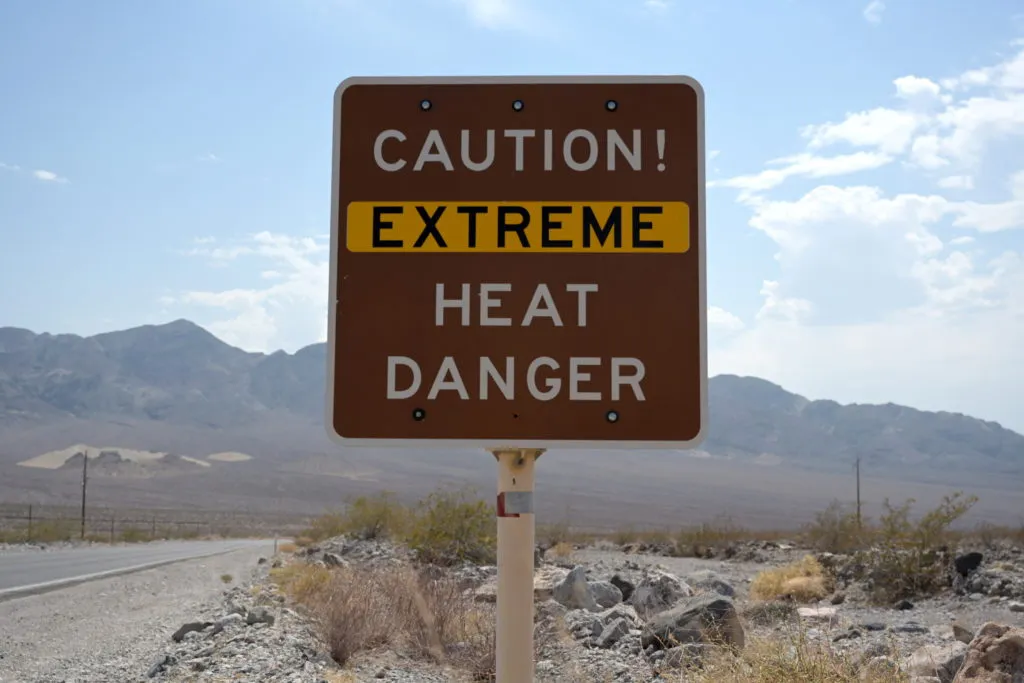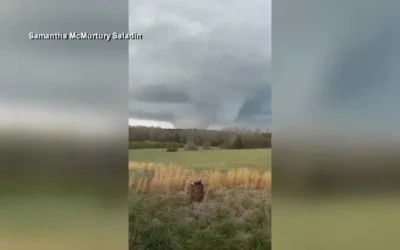California’s Weather Whiplash: From Record Heat to Daily Rainfall
This past weekend, Southern California was engulfed by a heat wave that shattered previous temperature records, leaving many residents reeling from the intense heat. The scorching conditions came to a sudden halt as rain made an unexpected appearance on Monday, showcasing the volatility of California’s weather.
Record-Breaking Temperatures
On Saturday, cities across Southern California reported unprecedented high temperatures. Areas like Los Angeles and Riverside saw temperatures soar into the triple digits, prompting heat advisories that warned residents of the dangerous conditions. According to the National Weather Service, downtown Los Angeles reached a blistering 102 degrees Fahrenheit, and some outlying areas even exceeded 105 degrees.
The heat wave was part of a larger pattern that has gripped the region, intensified by atmospheric conditions linked to climate change. As the weekend progressed, more and more communities felt the impact of the rising temperatures, with many arguing that this extreme weather underscores the urgent need for action on climate issues.
The Risks of Extreme Heat
As temperatures climbed, officials urged residents to take precautions, especially vulnerable populations such as the elderly, children, and those with pre-existing health conditions. Heat-related illnesses, like heat exhaustion and heat stroke, were on the rise, leading local hospitals to prepare for a surge in patients. Cooling centers were opened throughout the region, providing safe havens for those in need of refuge from the harsh elements.
Fire officials also expressed concerns about the heightened risk of wildfires due to the dry and scorching weather conditions. With the ground parched and vegetation brittle, the potential for fires increases dramatically. Southern California is no stranger to devastating wildfires, and experts warn that these intense heat waves only exacerbate the situation.
The Arrival of Rain
In an unexpected turn of events, the baking heat of Saturday swiftly transitioned into cooler temperatures and scattered rain showers by Monday. This sudden shift in the weather forecast took many residents by surprise. According to meteorologists, a low-pressure system moving through the area was responsible for the cooling temperatures and rain, which offered some relief from the previous heat wave.
Forecasters predicted that the rain might provide crucial moisture, benefiting the region’s desperately thirsty flora and fauna. This rainfall is particularly vital as California transitions into its critical autumn period when the chances of wildfires increase. Several regions reported receiving anywhere from a few tenths to an inch of rain, a welcome sight after such extreme heat.
The Economic Impact of Extreme Weather
The rapid transition from extreme heat to rain not only affects public health and safety but also has economic implications. Business owners, particularly those in agriculture and outdoor recreation, could face challenges resulting from temperature fluctuations and unusual weather patterns.
Farmers, for instance, have to continually adapt their strategies to weather conditions that have become increasingly unpredictable over the last few years. Crop yields can vary significantly depending on temperature and rainfall, affecting everything from pricing to availability. Many are left grappling with the implications of these weather anomalies, torn between the immediate losses during heat waves and the longer-term impacts of rain that can aid or hinder their crops.
California’s Climate Change Reality
This stark contrast in weather serves as a glaring reminder of California’s ongoing climate crisis. As studies show, climate change is leading to more frequent and severe weather events across the globe, and California is no exception.
The heat waves compounded by water scarcity across the Golden State highlight the drastic shifts in climate caused by human activity. As greenhouse gas emissions continue to rise, so do temperatures, leading to longer droughts and heavier rainfall when weather patterns do shift.
California’s government has began to take notice, investing significant time and resources into understanding and tackling these issues. As part of a broader plan to combat climate change, state officials are increasing funding for water conservation, wildfire prevention, and renewable energy initiatives.
Community Responses and Adaptations
In the face of such volatile weather, local communities are also stepping up to implement changes. Many urban areas have been focusing on creating greener spaces to combat the urban heat island effect that exacerbates heat waves. Initiatives have been launched to plant more trees and create shaded areas around residential and commercial buildings.
Public health campaigns are spreading awareness about the importance of hydration during hot days, as well as the signs and symptoms of heat-related illnesses. Local governments have also been working on improving access to cooling shelters and regular communication to ensure residents are aware of how to respond to shifts in weather.
The Future of California’s Weather
Looking ahead, meteorologists expect fluctuations like those seen over the weekend may become more common as climate change continues to exert its influence. Californians may need to brace themselves for an increasing variety of weather events, from intense heat waves to sudden rain bursts.
With many experts warning that our current trajectory is unsustainable, California’s residents are urged to adapt to these changes, both on an individual and community level. Engagement in climate activism and educational programs are critical to fostering understanding and readiness.
Conclusion
The dramatic shift from heat to rain observed across Southern California serves as a poignant reminder of the unpredictable nature of our climate. It calls for urgent action, preparation, and ongoing dialogue among residents, officials, and environmental advocates. As record temperatures continue to test the limits of resilience, the need for unity and proactive efforts has never been clearer. Understanding the importance of ecological balance is essential for tackling the challenges of tomorrow, as we learn to adapt not just to heat or rain, but to a changing world.







